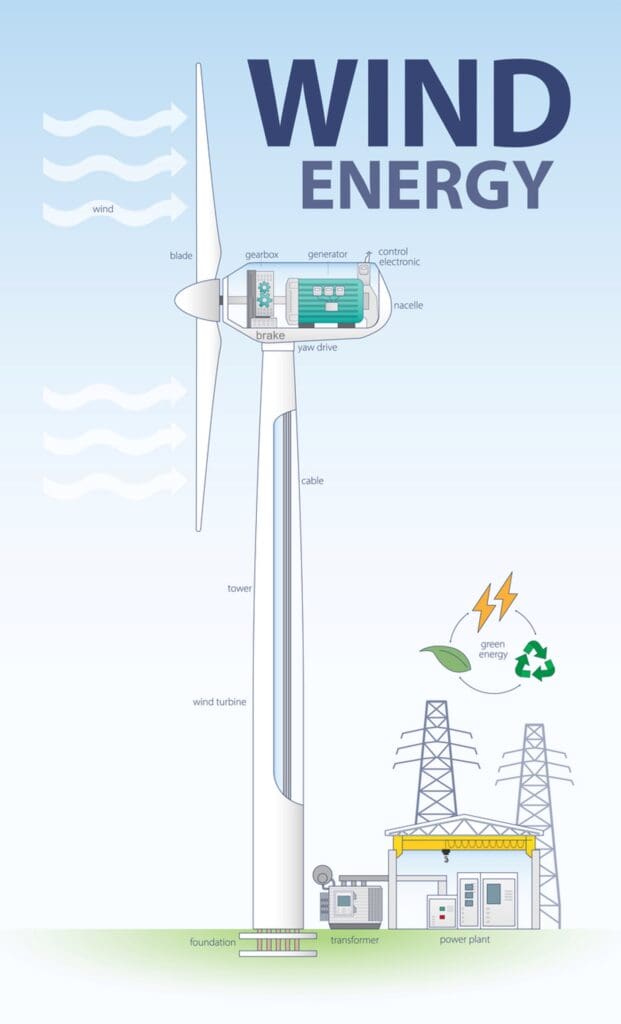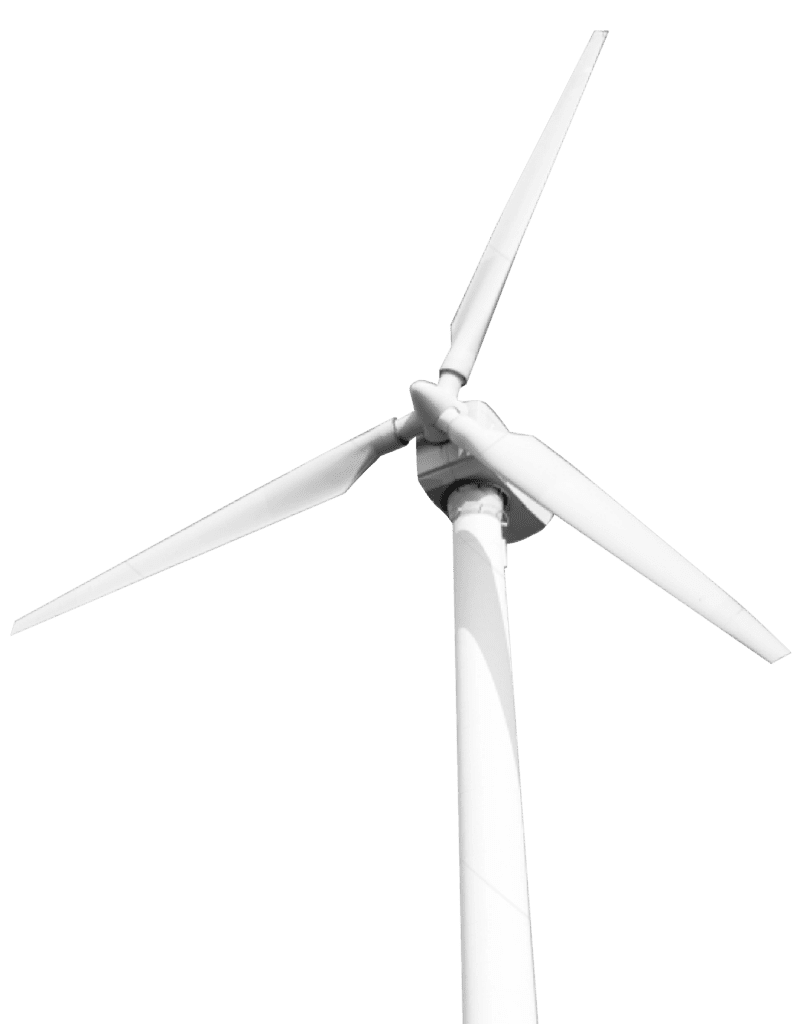WHAT IS
ONSHORE WIND
Onshore wind refers to the harnessing of wind energy through the use of wind turbines situated on land, as opposed to offshore wind locations such as in the ocean. In New Zealand, onshore wind farms represent a cornerstone of our renewable energy infrastructure, consisting of 21 fully operational wind farms as of July 2024.
The Background of Onshore Wind Energy in New Zealand
With over 12% of New Zealand’s total installed generation capacity derived from our onshore wind farms, they play a crucial role in meeting the nation’s energy needs.
Following the first wind turbine installed in 1993 at Brooklyn Hill, Wellington, the evolution of the wind energy sector has experienced periods of organic growth to periods of rapid expansion as experienced between 2004 and 2014. The wind energy sector then transitioned through a low growth period, and in 2021 it once again entered a new period of expansion as the country embarked on its energy transition.
STRATEGY
Why Onshore Wind
Strategically located across various regions of New Zealand, onshore wind farms capitalise on the natural variations in wind patterns. This diversity ensures a more consistent energy output overall, as when the wind isn’t blowing in one area, it may be blowing in another. As a result, wind energy is almost always contributing to the grid, enhancing our energy security and reliability in real-time.
To at least double our renewable energy produced on the grid by 2050, wind energy provides a clean, low-cost option for our country that can be built quickly at scale.
Because of Aotearoa New Zealand’s abundant wind resource, onshore wind turbines can generate electricity at greater rates when compared to other international jurisdictions. Typically, a wind farm will produce its full rated energy at around 30%-35% of the time, however in Aotearoa, this is approximately 40% of the time and in some cases can be as high as 50%. This generation rate (known as a capacity factor) is superior to alternative renewable investments such as solar PV which typically generate electricity at around 15%-20% of the time, meaning that onshore wind energy is more efficient.
Onshore wind energy, is therefore a very popular investment choice for developers, given its relatively low costs to build and operate, when compared to fossil fuel generation alternatives.
With onshore wind energy being a clean fully renewable solution, the future of this technology in Aotearoa is secured for many years to come.
STATUS
Current State of Onshore Wind in NZ
With 21 operational wind farms today, they collectively have the ability to generate enough electricity to power over 553,000 New Zealand households annually, reducing our reliance on fossil fuels and lowering our carbon footprint.
In total, with a remarkable 661 individual wind turbines operating, each constantly contribute to the renewable energy landscape of New Zealand. Ranging in capacity from 100 kilowatts (kW) to 4.3 MW (with the latest projects exploring 6 MW or 7 MW), these turbines efficiently capture the power of the wind, converting kinetic energy into electrical energy for our homes, businesses and communities.
TECHNICAL
How Do Wind Turbines Work?
- A wind turbine generally comprises 3 blades which are fixed to a hub and collectively called the rotor. The rotor is fixed to a shaft which is coupled to an electrical generator, sometimes using an intermediate gearbox.
- All the equipment above is mounted in a box on top of the tower, which is called the nacelle. The tower supports the nacelle and rotor and is connected to the foundation.
- When the wind blows over the turbine blades, it causes the rotor to turn and transfers the kinetic energy in the wind into the turbine’s main shaft.
- The rotating main shaft drives the electrical generator creating electricity. This is transferred to the base of the turbines via cables within the tower.
- Where a gearbox is used, the gearbox increases the rotational speed to allow the use of a standard higher speed electrical generator.
- As the wind speed increases, the rotational speed of the rotor increases, and more power is produced by the wind turbine.
- When the wind speed reaches the rated wind speed of the turbine, the blades rotate (pitch) about their long axis. This pitching controls limits the maximum output of the turbine to its rated power level. The pitching is also used to bring the turbine to a stop, should the wind speed exceed the maximum operating wind speed of the turbine.
- When the wind direction changes, a number of motors (yaw drives) orientate the nacelle so that it always faces into the prevailing wind, maximising the power extracted from the wind.


FUTURE PROJECTS
Find out what Onshore projects are in the pipeline for Aotearoa New Zealand in the upcoming years.
What is a wind turbine?
A wind turbine is a machine that transforms the kinetic energy of the wind into mechanical or electrical energy. Wind turbines consist of a foundation, a tower, a nacelle and a rotor. The foundation supports the tower, and the tower holds up the rotor and the nacelle.
The nacelle contains large primary components such as the main shaft, gearbox, generator, transformer and control system. The rotor is made of the blades and the hub, which holds them in position as they turn. Most commercial wind turbines have three rotor blades.
How efficient are wind turbines?
Wind turbines start operating at wind speeds of 3 – 5 metres per second and reach maximum power output at around 13 – 15 metres per second. At very high wind speeds, wind turbines shut down. A modern wind turbine produces electricity more than 90% of the time, but it generates different outputs depending on the wind speed.
Over the course of a year in Aotearoa, it will typically generate about 40% of the theoretical maximum output. This is known as its capacity factor. The capacity factor of conventional power stations is on average 50%-80%. Because of stoppages for maintenance or breakdowns, no power plant generates power for 100% of the time.
How much land is needed for a wind farm?
In a wind farm, the turbines themselves take up less than 1% of the land area. Additional land may be needed for the road access ways and maintenance areas. Existing activities like farming and tourism can take place around them and animals like cows and sheep are not disturbed.
How fast do the blades turn?
The blades rotate at variable speeds with a maximum of between 15-18 revolutions per minute.
How long do the turbines operate for and what happens at the end?
Typically, in the range of 25-35 years for turbines and steel structures and longer for concrete components, dependent on site and project conditions. Most turbine components can be recycled. Historically, blades have been the most challenging element to recycle. Manufacturers are actively working on improving the recyclability of blades and there is ongoing research and development in this area, which is gaining considerable momentum.
How much energy is used to Build and Operate a Wind Turbine?
Wind turbines produce no greenhouse gas emissions during their operation. It takes a turbine just three to six months to produce the amount of energy that goes into its manufacture, installation, operation, maintenance and decommissioning after its 20-25 year lifetime. During its lifetime a wind turbine delivers up to 80 times more energy than is used in its production, maintenance and scrapping. Wind energy has the lowest ‘lifecycle emissions’ of all energy production technologies.
FAQ's
View some of our most frequently asked questions about offshore wind farms